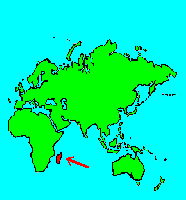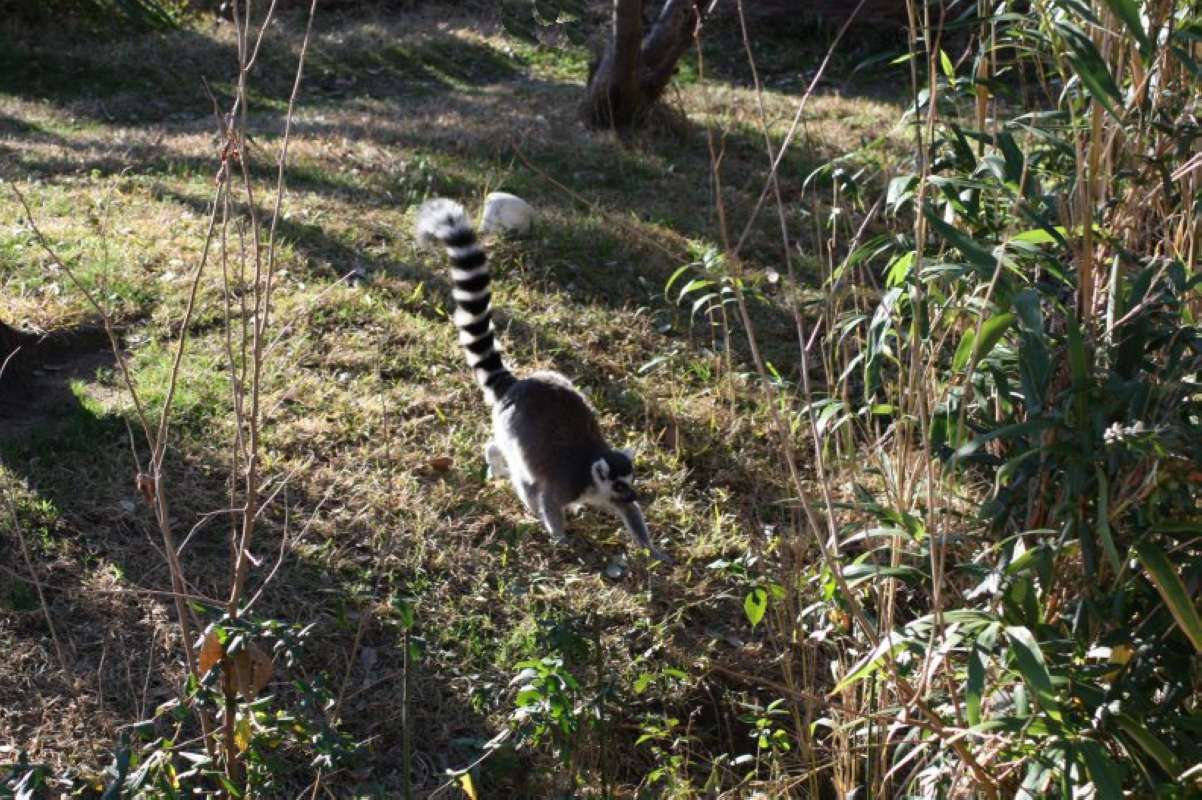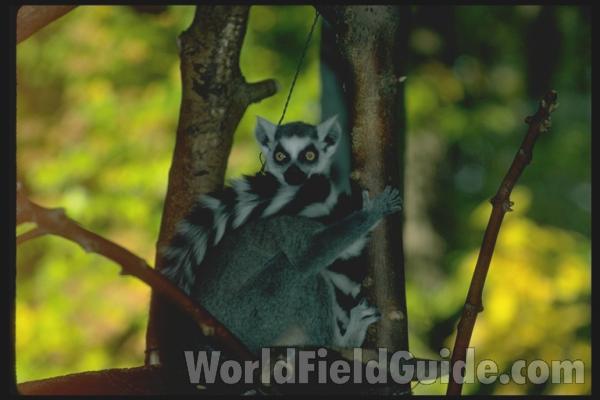SPECIES INFO
Ring Tailed Lemur (Lemur catta) is found only in Madagascar where it was originally widespread. Its population is now declining rapidly.Lemurs (Family Lemuridae) are confined to Madagascar and other nearby Indian Ocean Islands. Small to medium-sized animals, they are of great scientific interest because they are among the more primitive primates. There are about twenty-six species known. The dwarf lemurs and mouse lemurs (Cheirogaleidae)family contains another twenty species all native to Madagascar.
The 2005 Wilson-Reeder check list of world mammals lists 38 species of Lemurs and 21 species of Cheiroglaeoidae.
There were 19 species spread among four genera in lemur group per an older grouping:
Eulemur, Regular Lemurs (11 species)
Hapalemur, Bamboo Lemur (4 species)
Lemur, Ring Tailed (1 species)
Prolemur, Greater Bamboo (1 species)
Varencia, Ruffed Lemurs (2 species)
All species appear to be Appendix I in Sites.
Lemurs (Family Lemuridae to infra order Lemuriformes) are confined to Madagascar and other nearby Indian Ocean Islands. Small to medium-sized animals, they are of great scientific interest because they are among the more primitive primates.
The 2005 Wilson-Reeder check list of world mammals lists 59 species of lemurs, indris, sportive lemurs, and dwarf-mouse lemurs. (We also add the aye-aye here to make 60 species in this group.) They can be broken into the following five major groups:
Lemuridae, True Lemurs (19 species)
Cheirogaleidae, Dwarf, Mouse and Fork Crowned (21 species)
Lepilemuridae, Sportive Lemurs (8 species)
Indridae, Indris (11 species)
Daubentoniidae, Aye aye (1 species)
Lemurs, Monkeys, Apes, and Man are combined into the single order of Primates. This order contains about 390 different species. The Wilson Reeder 2005 world check list of mammals lists 376 species. (They did not include the newer order Scandentia of tree shrews with its 20 species.)
Ian Redmond presents a taxonomy tree that involves the order, two sub-orders, several infraorders, several superfamilies, several families, and several subfamilies. We support this complicated and valuable analyses of the primate order. However, our mission is to help identify species, and we have reduced the five intermediate taxonomic levels between order and genus to two levels to facilitate a quick taxonomic drill down.
Mammals (Class Mammalia), together with the birds, are among the youngest of the classes of animals. In species count, mammals number about fifty-one hundred, trailing reptiles (approximately fifty-five hundred), fish (approximately eighteen thousand), and birds (approximately eighty-six hundred).
There are three sub-types of mammals:
monotremes, the most primitive:
Develop in reptilian-like eggs and suckle milk emerging
(i.e., spiny anteater, duckbilled platypus)
marsupials
Newborn emerges very underdeveloped and continue to
mature in a pouch on its mother's abdomen (i.e., opossums,
koala, kangaroo)
placental
Embryo develops within the uterus of the female and is
dependent on a placenta for nutrition and waste removal
(i.e., humans, lions, monkeys)
About sixty-five million years ago, the Tertiary era produced thirty-five orders of mammals. Of this number, eighteen have survived to represent Earth's most diversified as well as its most highly developed classification of animals.
Extinction of mammals is fast becoming a serious issue. Duff and Lawson present a list of forty-one extinct species that reached extinction prior to 1800. These forty-one species are not acknowledged in the counts of the various families. Duff and Lawson also present a list of forty-six species including three gazelles, one zebra, one seal, one deer, and one wolf that have probably gone extinct since 1800. These forty-six species are included in the family counts. Science is adding about forty to fifty new species a year to the list. Many of these are the result of divisions of prior species; some are recent discoveries.
Mammals owe their survival to adaptive capabilities that include the ability to exploit whatever sources of food are available to them, as well as their ability to adjust to various climes. Food specialization influenced evolution to such a great extent that the teeth structure can and has been used to provide extensive information on the food needs and various lifestyles of extinct species.
Despite the vast diversity among mammals in terms of size, habitats and adaptations, they share without exception many characteristics such as:
a. body hair
b. mammary glands
c. certain skull characteristics
d. four limbs that permit speed
e. parallel not perpendicular limbs
f. compartmentalized internal organs
g. a four-chambered heart and pulmonary circulation
Backboned Animals (Phylum Chordata) are the most advanced group of animals on earth. These animals are characterized by having a spinal cord or backbone. Most members have a clearly defined brain that controls the organism through a spinal cord. Fish, amphibians, reptiles, birds, and mammals are in this phylum.
Currently, some taxonomists believe that the fish should be divided into two groups (sharks and regular fishes) and that there are some other primitive groups in the phylum such as hagfish or lampreys.
Animal Kingdom contains numerous organisms that feed on other animals or plants. Included in the animal kingdom are the lower marine invertebrates such as sponges and corals, the jointed legged animals such as insects and spiders, and the backboned animals such as fish, amphibians, reptiles, birds, and mammals.





